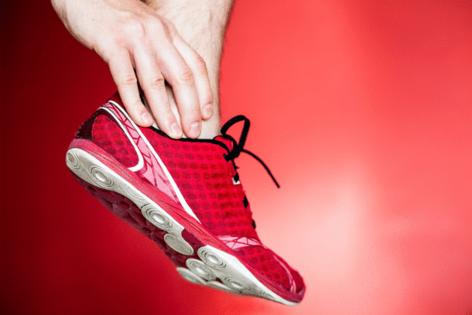Mayo Clinic Q and A: Shockwave therapy may help relieve foot problem
Published in Health & Fitness
DEAR MAYO CLINIC: I've had some foot issues, and I heard that shockwave therapy might be appropriate. How does it work? And how can it help?
ANSWER: This noninvasive treatment uses sound waves to transmit energy to tissues to help with the healing process. You may hear it referred to as extracorporeal shockwave treatment. Extracorporeal means the treatment occurs outside the body, through the skin, rather than a treatment provided internally. Originally used to treat kidney stones, shockwave therapy also is used to treat some orthopedic conditions.
The sound waves jump-start the healing process, reduce pain and inflammation, break up scar tissue and adhesions, stimulate bone healing, release growth factors and improve blood flow to damaged tissue. Additionally, shockwave treatment can aid in muscle relaxation and activation of connective tissue.
This treatment is administered through a small, hand-held apparatus. There are two different types of shockwave devices: radial and focused. They can be used separately or combined, depending on the condition being treated.
A radial shockwave device generates pressure waves when in contact with the skin and transmits energy into the targeted tissue. Focused shockwave treatment works through the principle of electromagnetic induction, similar to how loudspeakers work.
Differences between these two devices include the depth of energy penetration and location of their maximum effects. Radial pressure waves can cover a broader area, but their effects occur within the tissue, closer to the surface of the body. Focused shockwaves pinpoint their energy toward a smaller area. Additionally, focused shockwaves have a greater treatment depth, and their effects are more at the cellular level.
Shockwave therapy can be used to treat orthopedic conditions such as tennis elbow, golfer's elbow or a pulled hamstring. As a podiatrist, I use shockwave therapy for foot and ankle conditions, including but not limited to:
Plantar fasciitis: Inflammation of the thick band of tissue known as the plantar fascia that runs across the bottom of each foot and connects the heel bone to the toes.
Tendinitis: Inflammation of the thick fibrous cords that attach muscle to bone.
Ligament sprain: A stretching or tearing of fibrous tissue that connects two bones together in your joints.
Stress fractures: Tiny bone cracks caused by repetitive force, often related to overuse.
Acute fractures: A crack or a break of a bone.
Shin splints: Pain along the shin bone (tibia), the bone in the front of the lower leg.
Some of the benefits of shockwave therapy include:
No surgery.
No anesthesia.
No downtime or activity/sport restrictions after treatment.
Shockwave therapy is performed as an outpatient procedure and is usually done in a series of three to six treatments spaced three to seven days apart. The treatment has minimal risks or side effects, including slight bruising or mild swelling at the treatment site. Sometimes, maintenance treatment is performed four to six weeks after the last treatment. While receiving treatment, anti-inflammatory medications may need to be discontinued.
The full effects of shockwave therapy can be seen up to 10 to 15 weeks after the final treatment.
If you sustained a new foot injury or are suffering from a chronic foot condition that is not responding to other nonoperative care, shockwave might be another alternative treatment to help alleviate your symptoms. — Elizabeth Bondi, D.P.M., Podiatry, Mayo Clinic, Rochester, Minnesota
©2024 Tribune Content Agency, LLC.










Comments